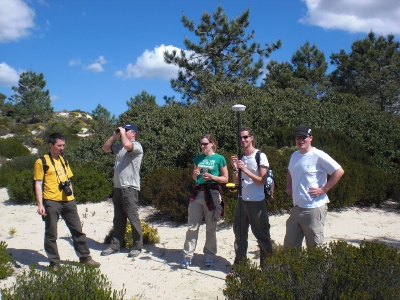Forschungsschwerpunkt
Wir verstehen Landschaften als gekoppelte Mensch-Umwelt-Systeme. Sie lassen sich beschreiben als Raumausschnitt, der sich auszeichnet durch das Vorhandensein von physisch-materiellen Elementen in einer pezifischen Anordnung mit dezidierten internen und externen Gesetzen und Abhängigkeiten sowie einer Wahrnehmungsrealität des Betrachtenden und dessen Wertverständnis. Landschaften unterscheiden sich daher vom Naturraum, durch die vom Menschen eingebrachte Intention und seinen Handlungswillen. Sie verfügen gleichsam über ein Potenzial, das der Mensch zu seinen Gunsten nutzen kann und welches in der Vergangenheit vor allem in Europa artenreiche Kulturlandschaften hervorgebracht hat. Vor allem durch demographischen Wandel, Ressourcennuutzung Wachstum und Globalisierung sind zahlreiche neue Drücke auf die Landschaften entstanden, welche eine tiefgreifende Veränderung in Gang gesetzt haben.
Das Ziel ist es, Veränderungen in der Landschaft zu erfassen, quantifizieren und zu deuten. Vor allem langfristige Entwicklungen und mögliche kritische (Öko-)Systemzustände sollen auf Landschaftsebene frühzeitig erkannt werden können.
In diesem Forschungsschwerpunkt wird eine breite Palette an Methoden eingesetzt. Zur Analyse der Umweltsysteme insbesondere der räumlichen Erfassung verwenden wir hyperspektrale Fernerkundung, Terrestrisches Laserscanning, UAV und genaue GPS-Kartierungen, die wir in Geodateninfrastrukturen verwalten und mit GIS analysieren. Zur Untersuchung des Gesellschaftsystems praktizieren wir eine gestufte Vorgehensweise, welche in der Regel Akteurs- und Stakeholderanalysen, Institutionenanalyse und Diskursanalysen umfasst. Zur besseren Vermittlung setzen wir das DPSIR-Schema und andere Rahmenmethodiken ein.
In unseren Projekten kooperieren wir international mit anderen Forschungsrichtungen, z.B. mit der Pflanzenökologie, der Photogrammetrie oder der Soziolologie.


















